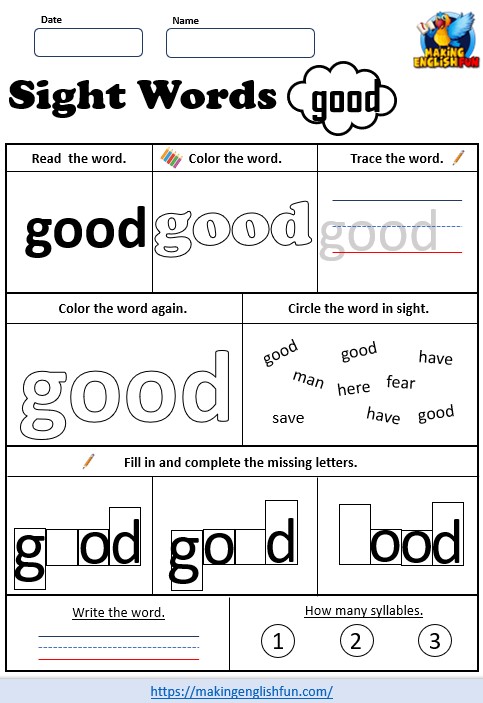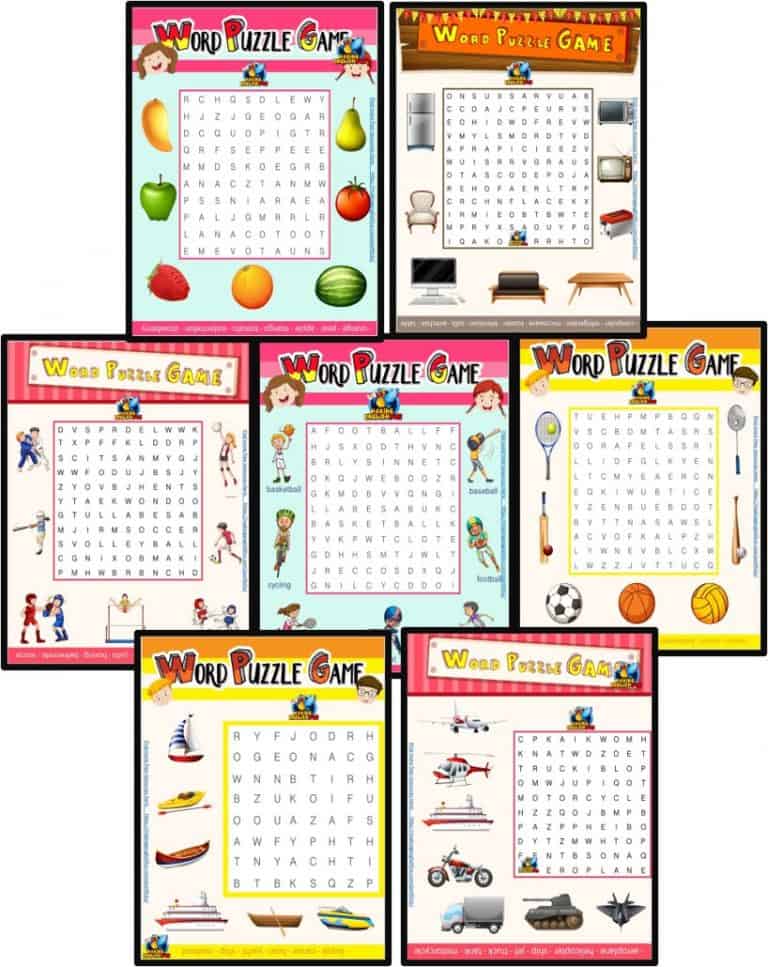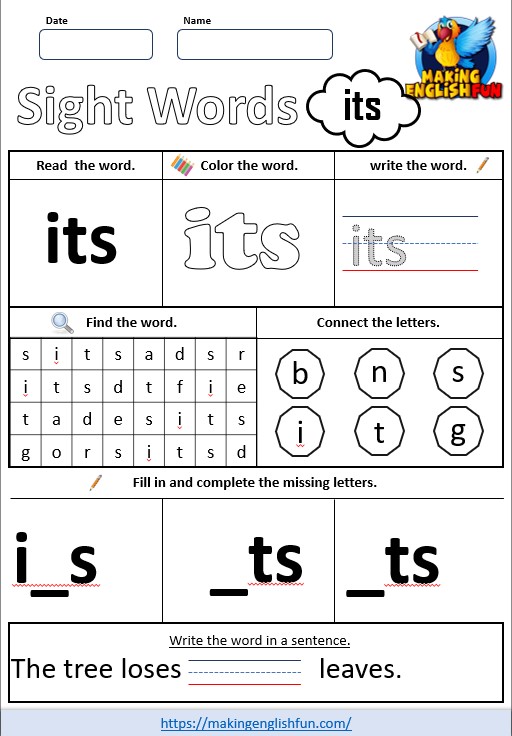FREE Printable Kindergarten Sight Word Worksheet – “Good”
The sight word “good” is essential for Kindergarten students, representing a term used to describe something of high quality, virtue, or desirability.
This guide, crafted for educators, ESL instructors, and parents, provides a printable worksheet to help children master “good,” thereby enriching their ability to discuss qualities, moral judgments, and express satisfaction.

You can see the full grade 1 Dolch Sight Word worksheets sets on the links below.
Importance of Sight Words
“Good” plays a significant role in developing reading fluency and comprehension, offering students an adjective that’s key for articulating approval, quality, or positivity.
Mastery of “good” at the Kindergarten level is vital for fostering an understanding of value judgments, encouraging positive communication, and enhancing descriptive language skills.
Overview of “Good”
| Aspect | Details |
|---|---|
| Sight Word | “good” |
| Meaning | Of high quality, virtue, or desirability; beneficial, agreeable, or satisfactory. |
| Example | “She did a good job.” / “This apple tastes good.” |
| Type of Word | Adjective |
This table offers a concise overview of the sight word “good,” emphasizing its significance in enabling Kindergarten students to articulate and comprehend discussions involving quality, morality, and personal preferences.
Free Sight Word ‘Good’ Worksheet
This worksheet dedicated to “good” features targeted exercises designed to deepen students’ understanding of this evaluative term.
Such resources ensure that learners can effectively engage with texts and conversations that involve assessing qualities, expressing contentment, or making ethical distinctions.
You can download the printable sight word worksheet below and there are links to full sets of sight word worksheets above and below.

‘Good’ Worksheet Activities
Included in the worksheet are:
- Tracing tasks for hands-on interaction with “good.”
- Recognition exercises to enhance the ability to identify “good” within various contexts.
- Sentence construction drills utilizing “good,” reinforcing its use in expressing approval, quality, and satisfaction.
Complementary Educational Tools
To supplement the learning experience with “good”:
- Interactive Digital Tools: Platforms that feature “good” in scenarios exploring character building, story elements, or decision-making activities, promoting comprehensive understanding.
- Flashcards: Quick-reference cards showcasing “good” for effective practice and language reinforcement.
- Curated Reading Materials: Books and stories that utilize “good,” encouraging its application in reading and fostering discussions about behavior, personal choices, and qualities of objects and actions.
We have more sight word resources here on the site and you can access these resources below as well.
- 40 FREE Printable Pre – K Dolch Sight Word Worksheets.
- 41 FREE Printable Grade 1 Dolch Sight Word Worksheets
- 41 FREE printable grade 3 Dolch Sight Word Worksheets
- 25 Sight Word Games
- Is There An Order To Teach Sight Words?
- Sight Word Spelling Worksheets
- How to teach Sight Words And What Are They?
- Sight Words Worksheets: set 1-20
- Sight Words Worksheets: set 21-40
- 25 Free Kindergarten Sight Word Worksheets.
- FREE Printable Dolch Sight Words Worksheets: Pre – K to Grade 3
- FREE Printable Pre-K Dolch Sight Word List:
- FREE Printable Grade 1 Dolch Sight Word List
- FREE Printable Grade 3 Dolch Sight Word List:
Understanding Kindergarten Sight Words, Dolch Words, and High-Frequency Words
| Term | Definition | Key Characteristics |
|---|---|---|
| Dolch Words | A list of 220 words compiled by Edward William Dolch, Ph.D., considered essential for reading fluency. | – Specifically chosen to enhance reading proficiency. – Includes pronouns, adjectives, adverbs, prepositions, conjunctions, and verbs. – Does not categorize by grade level but is often introduced according to grade. |
| Sight Words | Words that are recognized instantly by sight without needing phonetic decoding. | – Can include Dolch words and beyond. – Aimed at enhancing reading speed and comprehension. – Often taught as part of early reading curricula. |
| High-Frequency Words | Words that appear most frequently in written material. | – Includes a mixture of Dolch words and other commonly used words. – Focuses on the practical aspect of reading frequency. – Often tailored to specific age groups or reading levels. |
Conclusion
The “good” worksheet is an invaluable resource in the Kindergarten sight words curriculum, assisting educators, parents, and caregivers in teaching students about the nuances of evaluation and morality.
Mastery of “good” not only supports literacy development but also promotes positive reinforcement, ethical understanding, and expressive language skills, significantly contributing to students’ social and academic growth.







